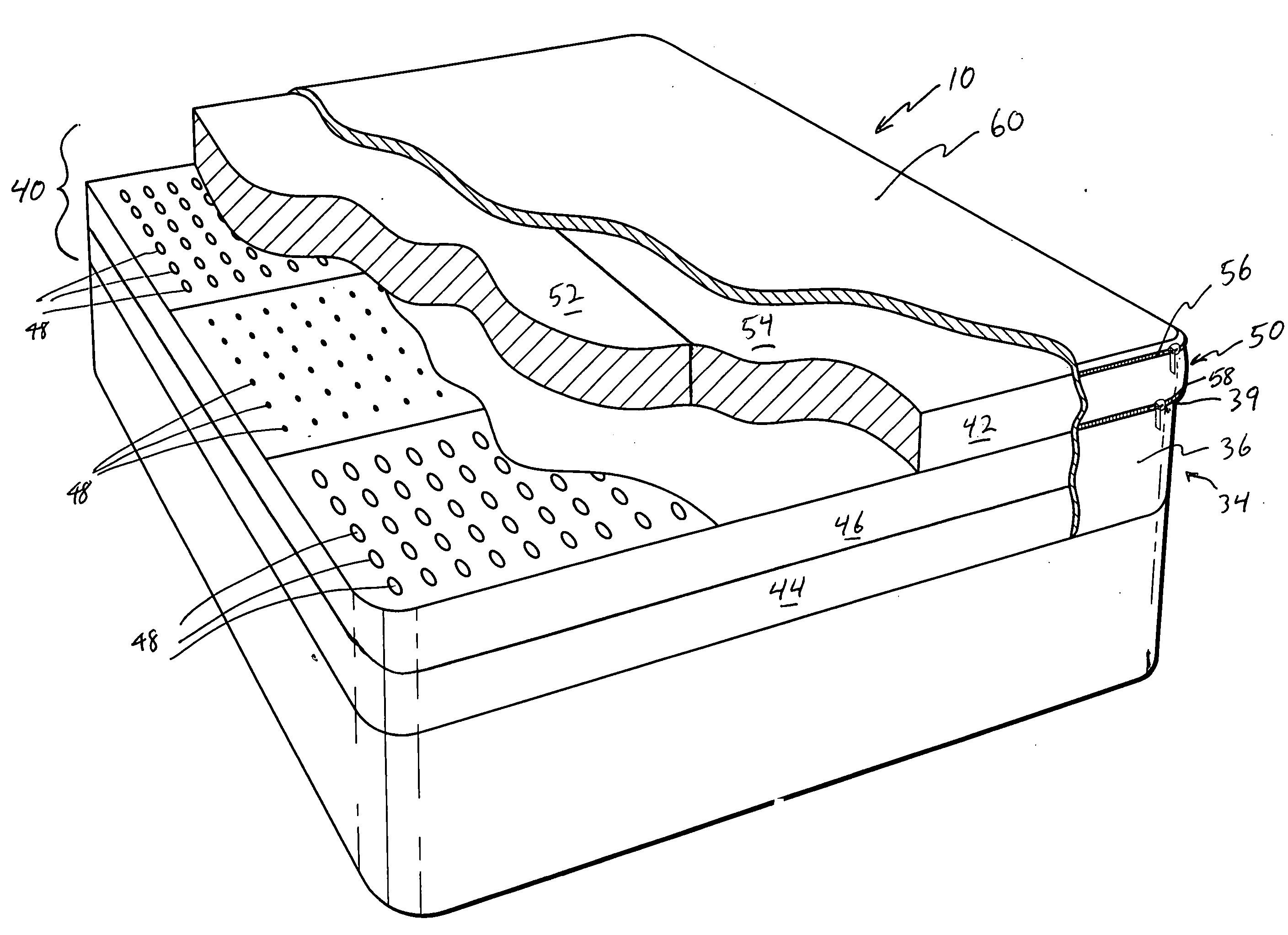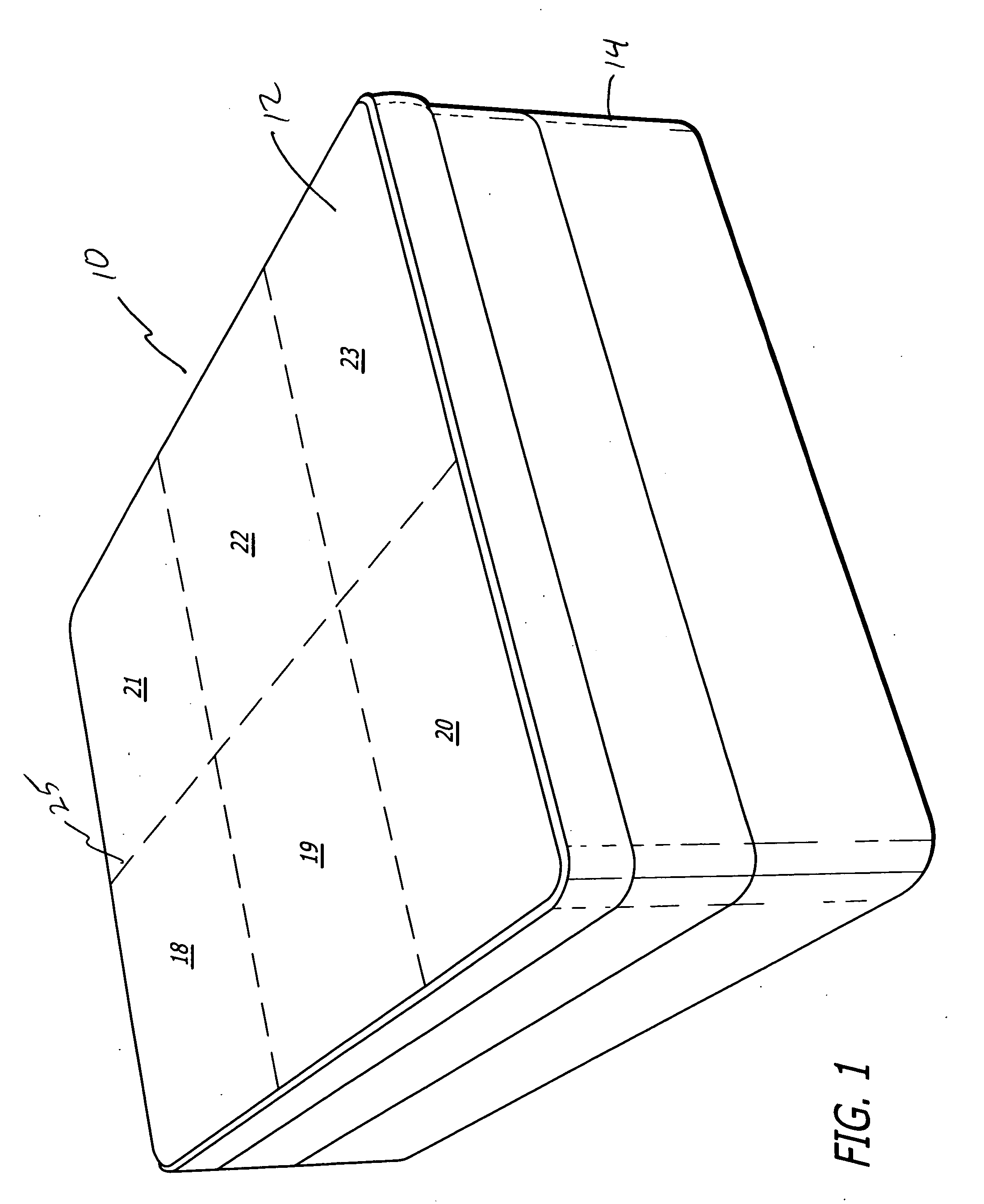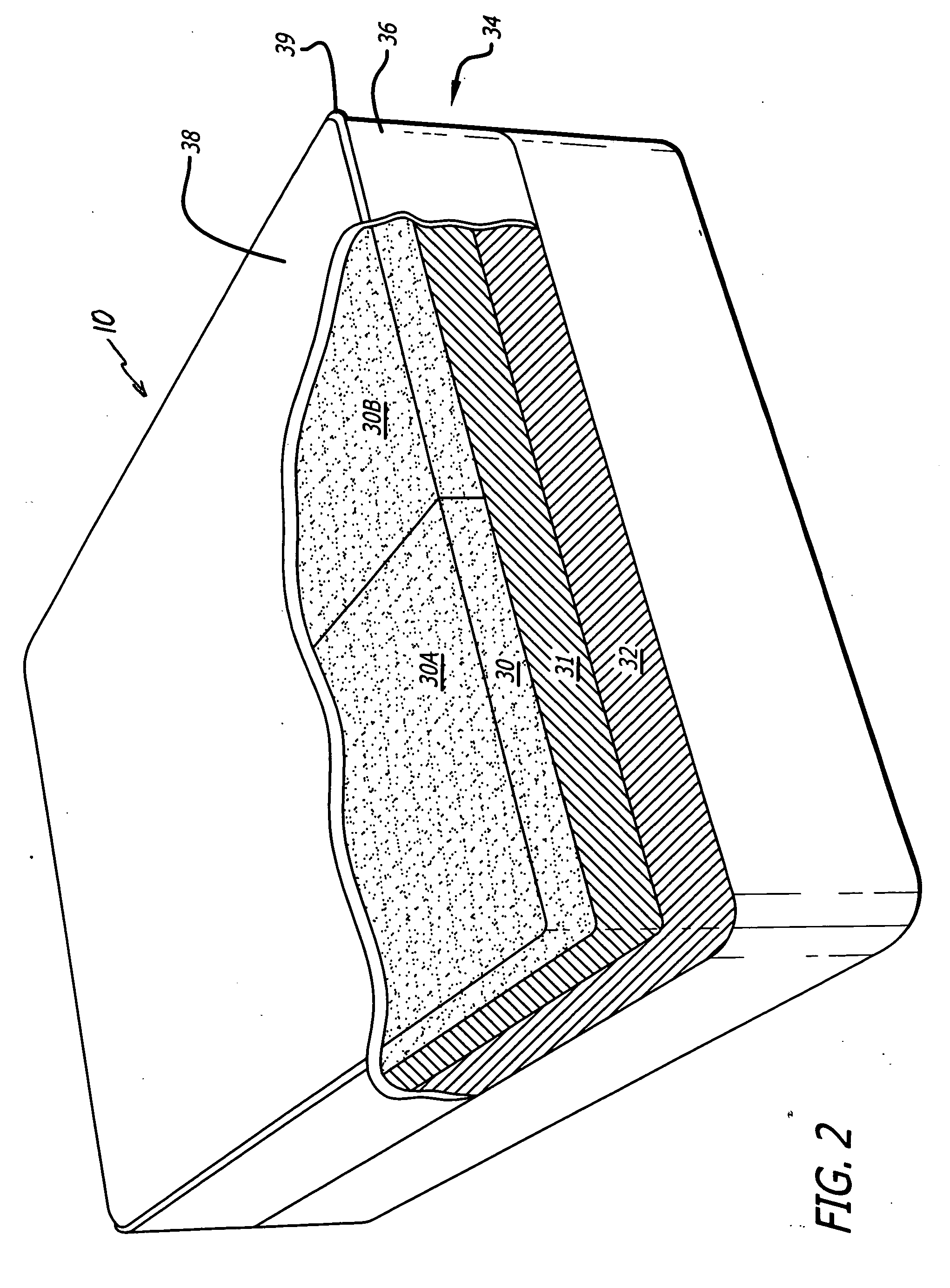Composite mattress assembly and method for adjusting the same
a mattress and mattress technology, applied in the field of composite mattress assembly and method, can solve the problems of high level of return, inability to replace components, and difficulty in improving the properties of zone and surface area,
- Summary
- Abstract
- Description
- Claims
- Application Information
AI Technical Summary
Benefits of technology
Problems solved by technology
Method used
Image
Examples
Embodiment Construction
[0014] Mattress assemblies 10 according to aspects of the present design are shown in FIGS. 1-3. FIG. 1 shows a perspective looking down toward the upper surface 12 of a mattress assembly 10. It is shown as a mattress assembly 10 suitable for use by two persons. The mattress assembly 10 is shown on top of a box foundation 14.
[0015] For reference herein, the mattress assembly 10 has a first longitudinal phantom line 25 dividing the mattress into a left sector and a right sector. Further, horizontal phantom lines show the division of the mattress sectors into zones 18, 19, 20 and 21, 22, 23. Zones 18 and 21 will be located beneath the head and shoulders of a user; zones 19 and 22 beneath the torso; and zones 20 and 23 beneath the legs and feet. These regions of the mattress assembly 10 are intended to be configurable and thereby responsive to each of those respective parts of the body of the user(s).
[0016]FIG. 2 shows a perspective, partially cut-away view of the mattress assembly 1...
PUM
 Login to View More
Login to View More Abstract
Description
Claims
Application Information
 Login to View More
Login to View More - R&D
- Intellectual Property
- Life Sciences
- Materials
- Tech Scout
- Unparalleled Data Quality
- Higher Quality Content
- 60% Fewer Hallucinations
Browse by: Latest US Patents, China's latest patents, Technical Efficacy Thesaurus, Application Domain, Technology Topic, Popular Technical Reports.
© 2025 PatSnap. All rights reserved.Legal|Privacy policy|Modern Slavery Act Transparency Statement|Sitemap|About US| Contact US: help@patsnap.com



